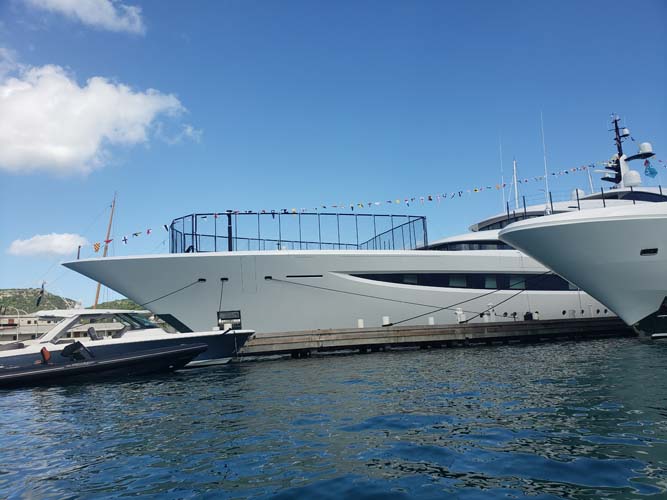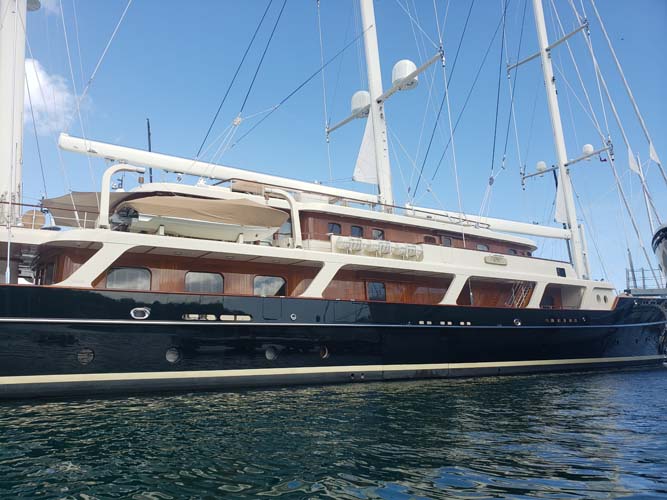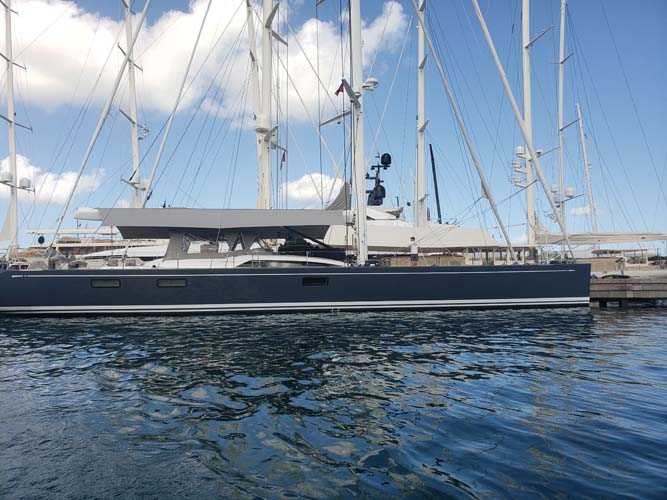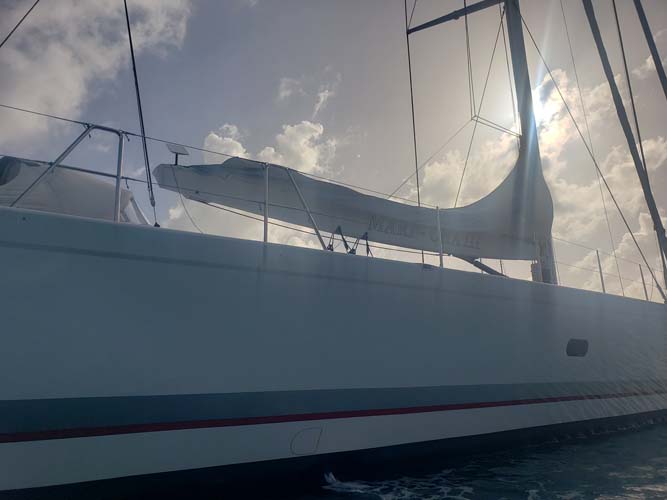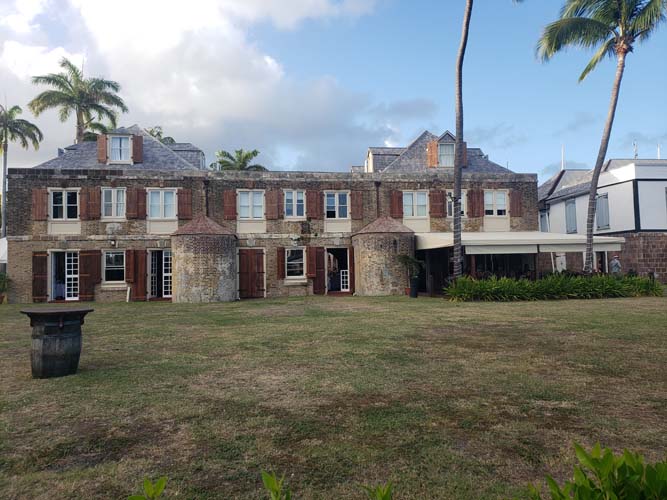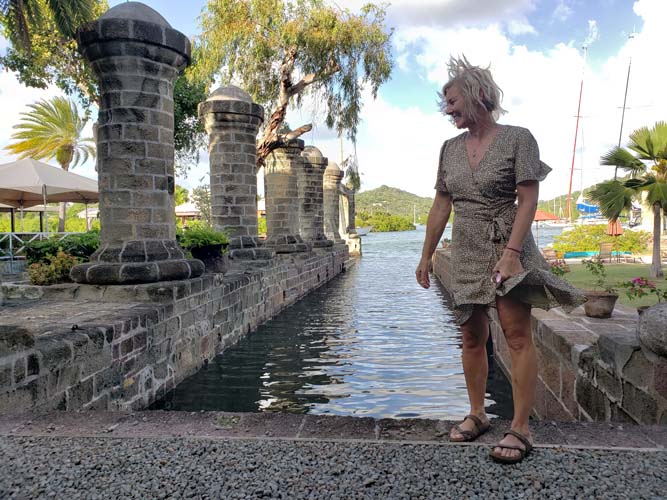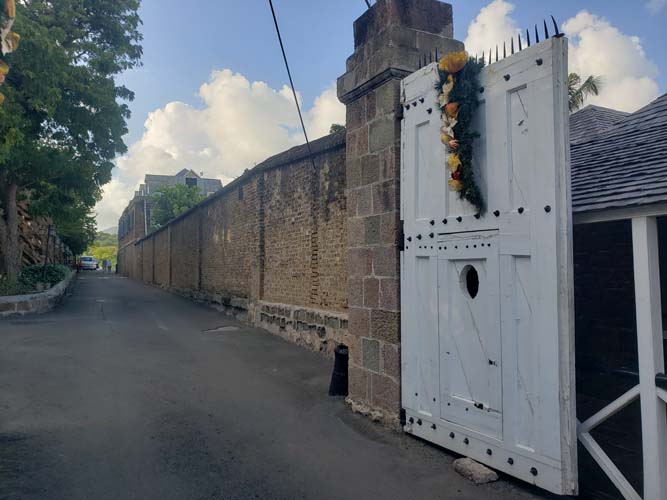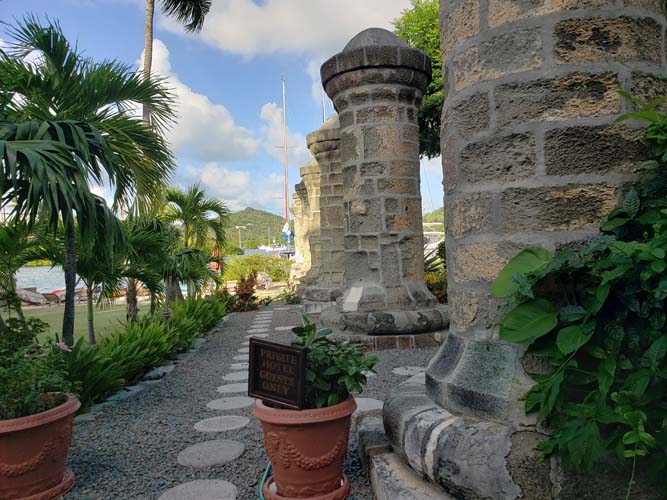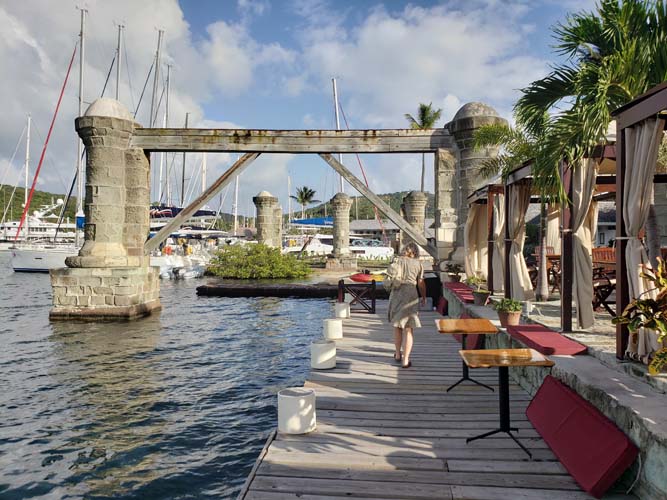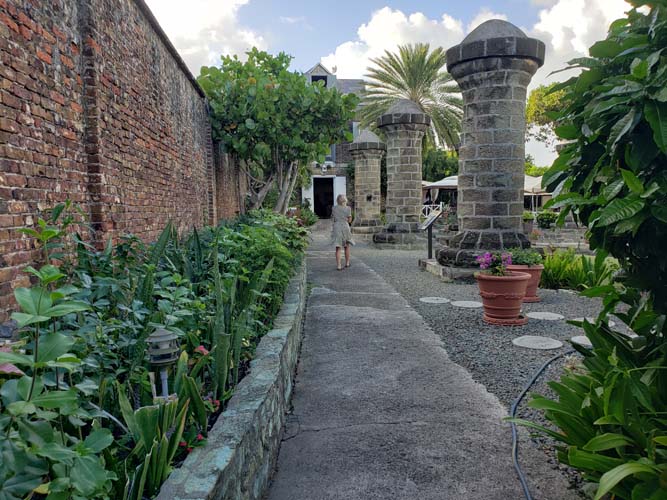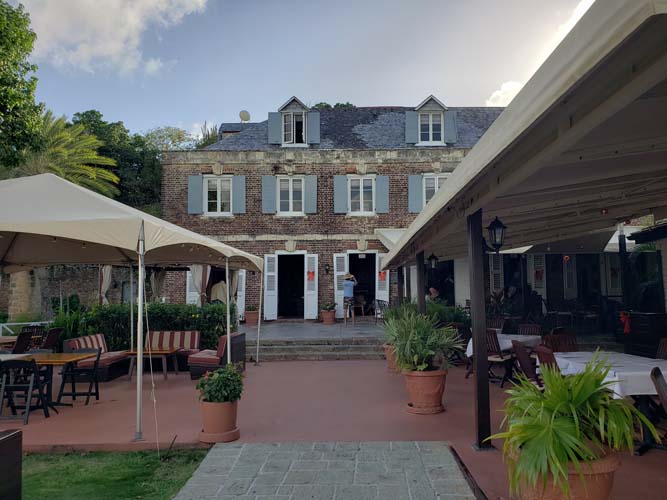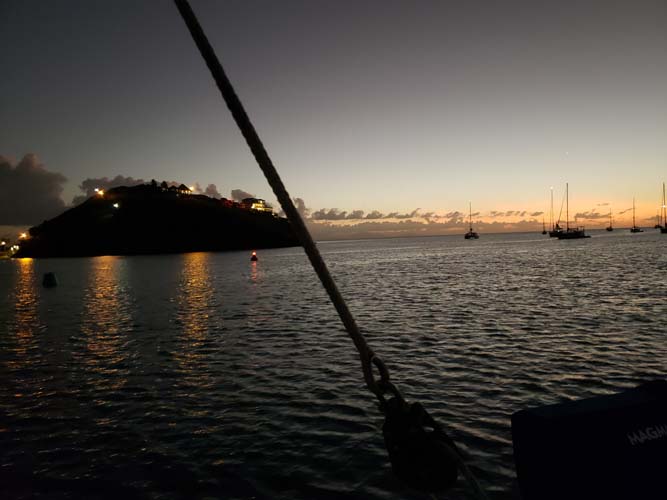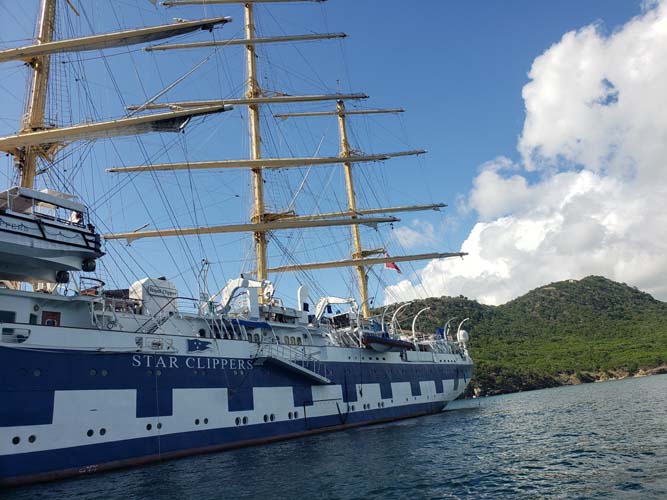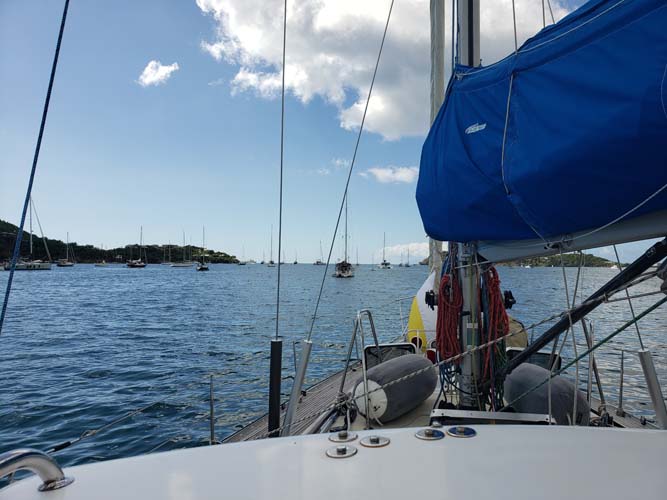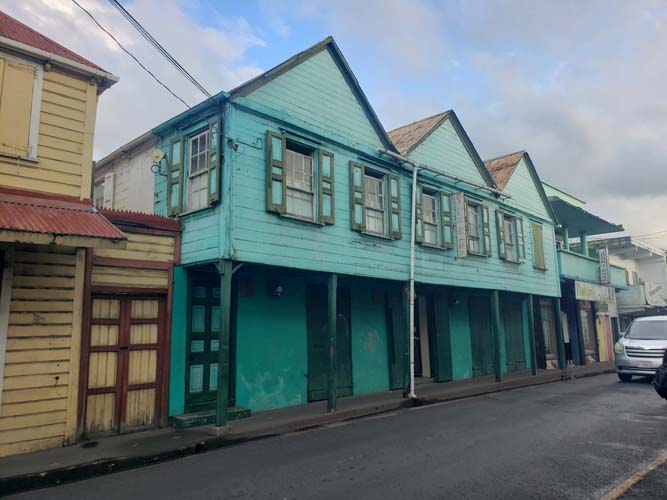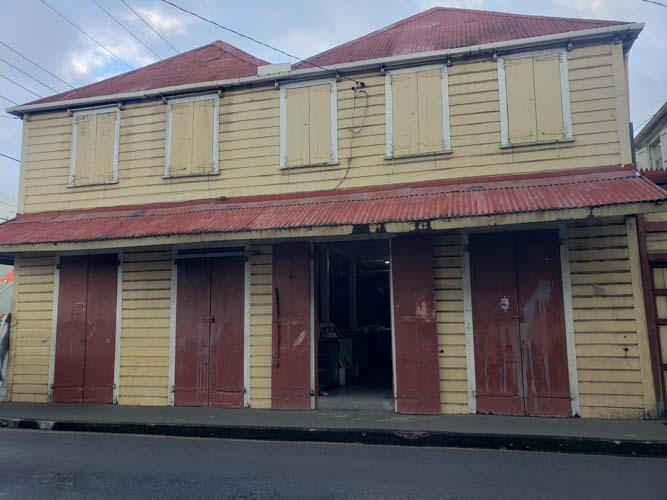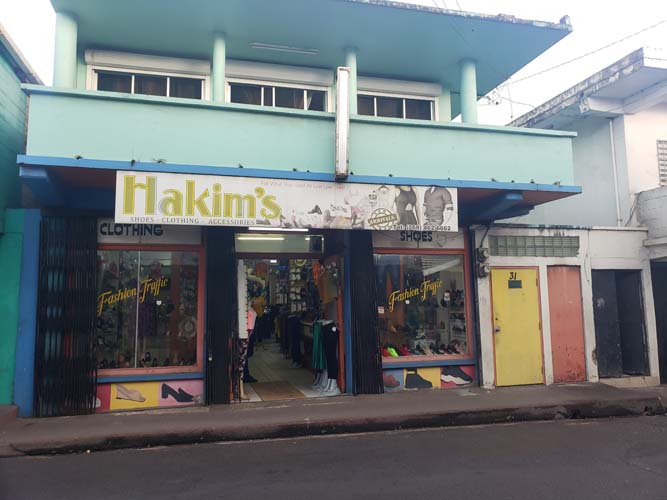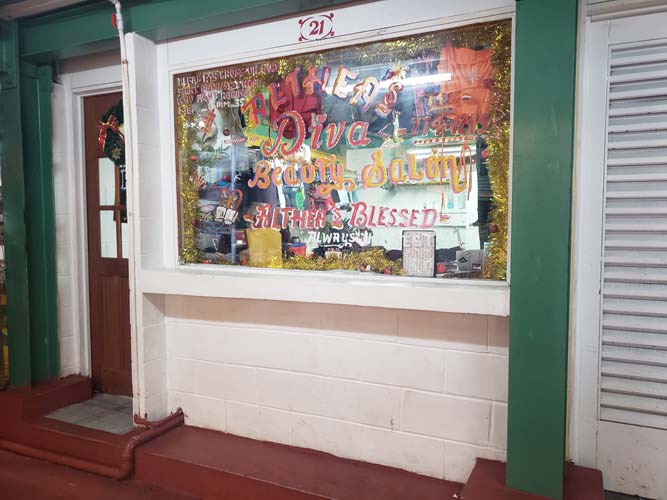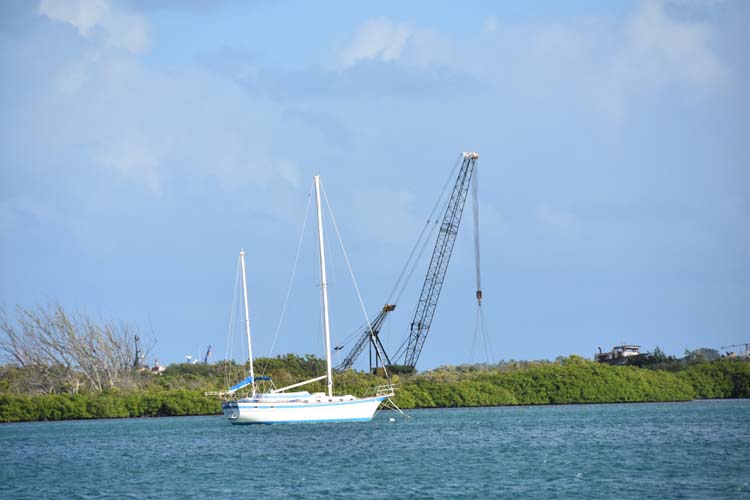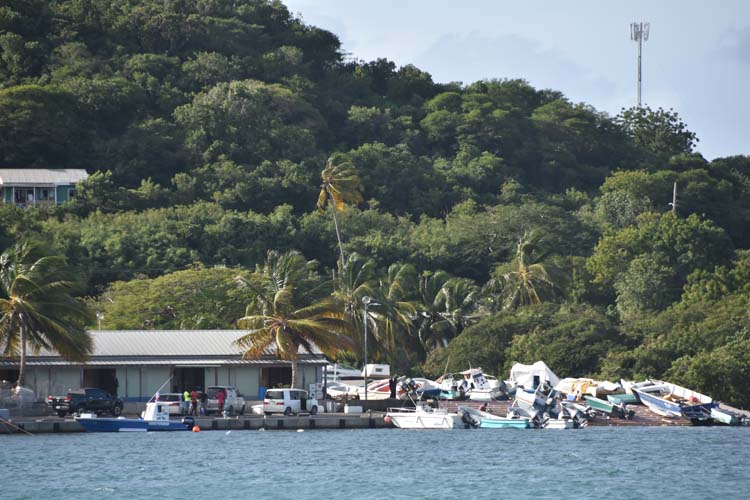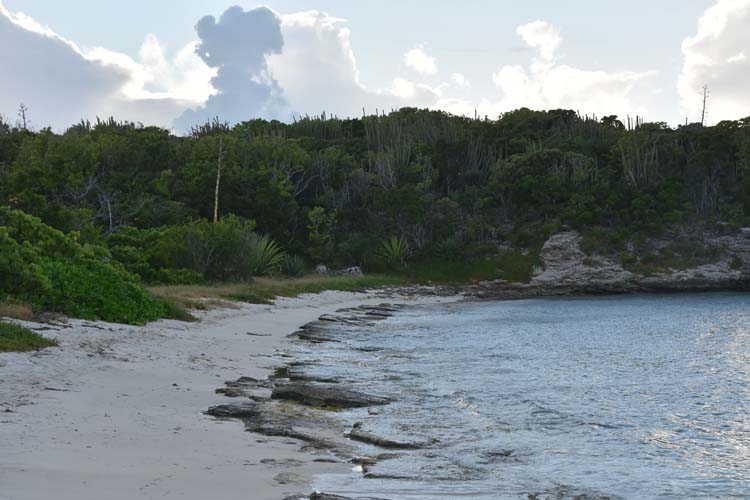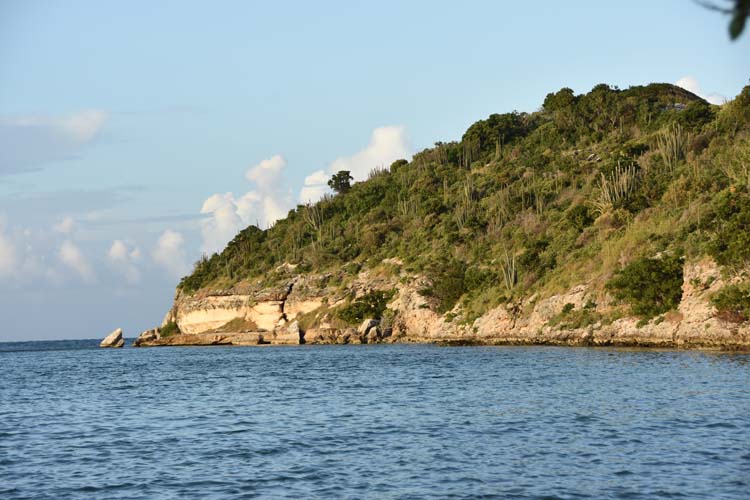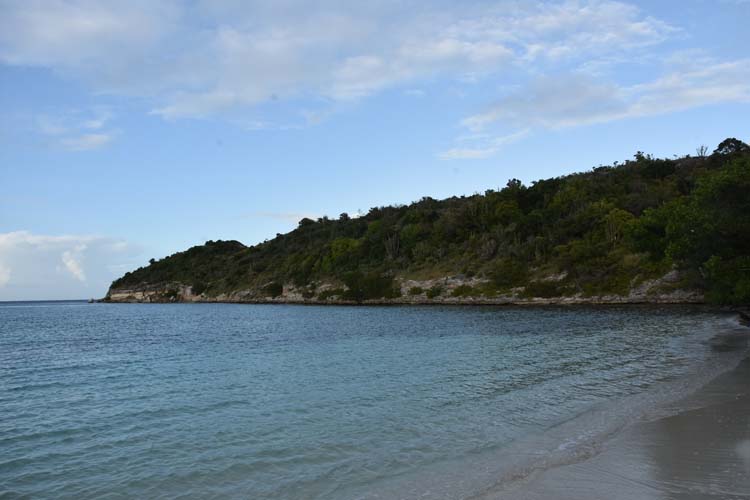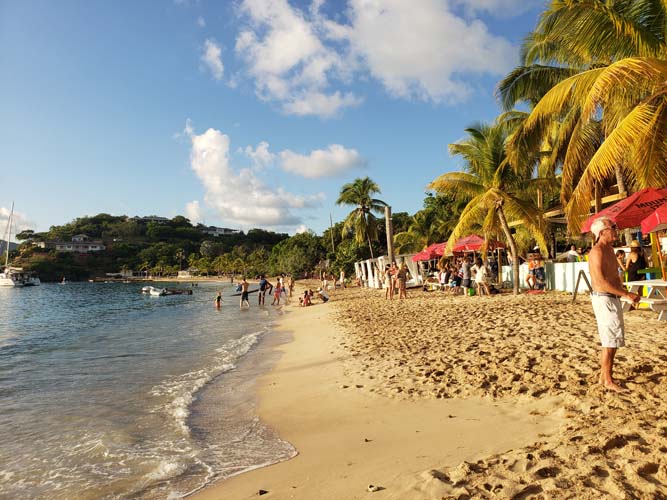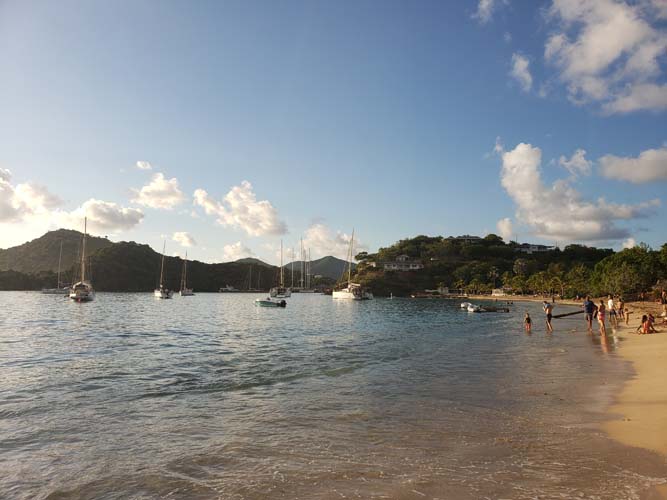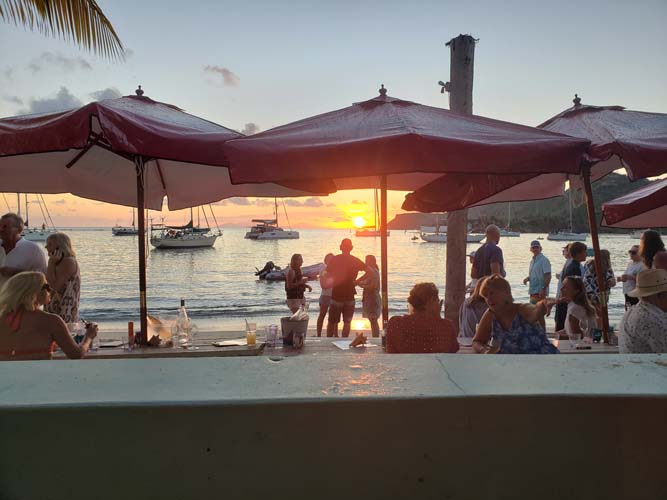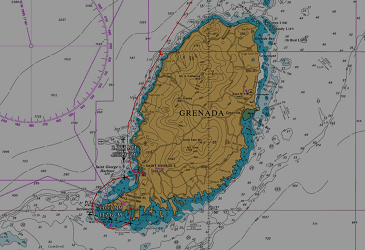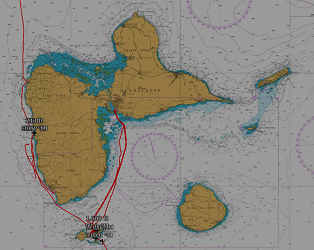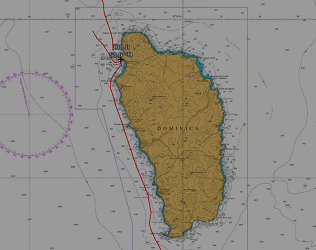ANTIGUA
If there is one island that symbolizes contrasts in standards of living probably I would say Mustique tops the list, but Antigua is not that far behind. There is probably not a single view of Antigua amongst its visitors. All the venues give a different impression when you arrive by air, or sea, private jet or airline, private yacht like ours, or megayacht, or, even cruise ship. Each group will experience a different exposure to local residents, different food, and somehow all come for the same thing: A great reef, beach, or sunset. ANtigua offers all of these contrasts to various visitors.
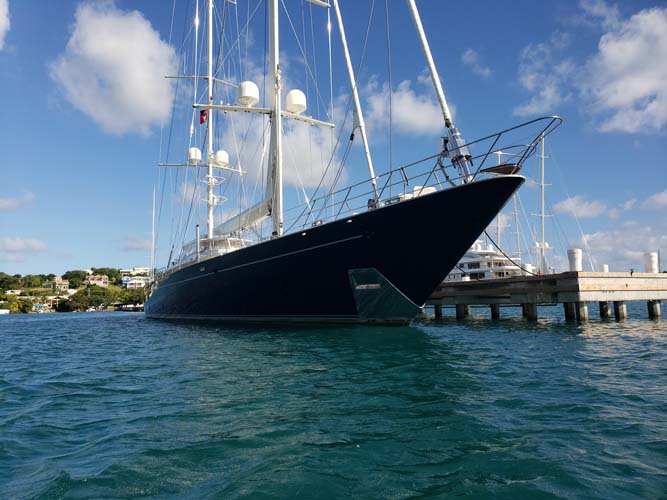
Being the first port of arrival after our offshore passage, we were happy to arrive and put our feet up. I had a rough passage, having had to put inot Bermuda for a crew's hospitalization with dehydration and some unknown medications, and possibly mental issues. The November 1 rally departure had been delayed 10 days due to weather. The arrival in Bermuda and waiting for hospital results made it impossible to leave before a first depression, then the remaining crew, Josh, and I had to weather a 45 knot depression before thanksgiving, with 55 knot gusts at anchor (the offshore research vessel based there reported 65 knots in the gust). After a third round of crew arrived inBermuda, we enjoyed a problem free sail down to Antigua. Seeing land afte a passage is always a great signt, but the prospect of putting your feet up and resting after a complex voyage is elating.
Clearing
There are two convenient places to clear customs. English Harbor, and Jolly Harbor. Falmouth harbor is a short walk from English harbor, and has a lot more room to anchor, so we opted for that. Q flag protocol is the best approach always, but the authorities in Antigua are overall friendly and professional, indeed very different than the reputation we heard regarding the BVI staff. (I won't say much on that but reported experiences are not positive).
Falmouth harbor is a designated National Park. You will be charged per diem for each crew member, as well as the boat. Jolly Harbor, on the other hand, is not subject to such fees, and many cruisers choose to only stay a few days in Falmouth, clearing customs out of Antigua at Jolly Harbor to avoid any fees. While these fees add up, one can rationalize that they are a small part of the overall boat budget, and we have the conviction that although fees pay for very little service, they do include garbage and dinghy docking, and it is a means for cruisers to pay back and support the island overall, by injectnig some money into the economy.
English
English Harbor is of course the historic area, many people spend christmas there and enjoy the festivities, inviting friends and family to fireworks. If you miss that, rest assured that anywhere you go, there will most of the time be a group of like minded sailors who gather on the beach for such events, if one wants the company of the great sailing family that are cruisers.
Nelson's Dock Yard was a bona fide british stronghold in the Caribbean, starting with the time that the British, outgunned by french boats, supposedly came into the harbor, hiding the masts of their ships by decorating them with tree branches to hide from the French, and the ruse worked. Sun Tsu said in the Art of War,had figured out such tactics long ago; “All warfare is based on deception. Hence, when we are able to attack, we must seem unable; when using our forces, we must appear inactive; when we are near, we must make the enemy believe we are far away; when far away, we must make him believe we are near.”
The Dock Yard was not only a fort, but all the ship repair amenities were there, including sailmaking, carpentry and provisioning of ships. Considering the place was built starting in 1740, it is impressive, built to last like the old world structures of the time. Sadly the yard was built mostly with the help of enslaved plantation workers.
We did not stay in the Dock Yard, owing to the fact we got there quite late, having had delays due to the crew dehydration and diverting to Bermuda. We were there during the MegaYacht show, some impressive machines were at the dock, one of which owned by an oligarch and frozen as an asset, maintained by the Antigua government who probably cannot wait to get that expense off its books. Others were there for the show, complete with a full crew of chamois pushers, as we call the professional megayacht crew. Though the captains are well skilled, as are the mates, it seems deck hands and engineers are cleaning non stop. On some of the biggest yachts, we saw contractors occasionally.
Several large sailing yachts stood out, but the most interesting to see for us was Mari Cha IV, a famous record breaker, well maintained and ready to cross oceans. There was ample beauty in very large machines that sail. One power boat was deliberately defaced with a tennis court net at the bow. I thought the naval architect would have been apalled at the look, having spent days or weeks trying to refine the hull sheer line only to have it spoiled by a crazy contraption.
Falmouth
Falmouth does get some swell, and we stayed away from the Southwest side of the harbor. There is good anchoring off the catamaran marina, but there are moorings mixed with anchors and some people actually left their 50ft Lagoon cat at anchor, unattented except for a once or twice a week visit by a gardiennage caretaker.
Caution is warranted, pick your spot carefully. On the first try we picked up a piece of coral which wedged itself perfectly into the Bruce Anchor's bottom plate. After dragging we cleared the anchor, with the welcome help from some salty dawgs wh helped tie the knot to hang the rock, allowing us to lower the anchor and then slip the knot. In this harbr, you can expect to pick up coral rocks used as dinghy moorings, or chains from bigger moorings.
BenetAground
The charts are accurate. This did not prevent, however, groundings by nonchalant skippers. "I thought I had enough depth behind the Catamaran" said a french flagged Beneteau 50 owner who had sailed from Martinique. His winiged keel garbbed the bottom and the boat did not move despite all efforts by a number of dinghies to try to pull it. The cavalry came in the form of a tow service, about 300HP of outboards. It was an odd crowd. The owner of the business, the right hand, and a bunch of kids. The man was in the middle of his christmas family dinner while the call came, and within 30 to 40 minutes he was on site. It took every bit of power to drag the boat off the sand bar. The towboat is also a dive service, he checked and found no serious damage, only paint and barrier coat needed. The bill was $900US, which they negotiated down to $800. This is where i have a problem with some french sailors; trying to act like this was a $200 job, went back and forth, in an insulting fashion. Eventually they all went to the ATM together and it was settled. Beware of sandbars in Falmouth and other harbors, and leave room to leward. Looking at the chart plotter hels.
St John
Saint John is a busy town. It has two sides to it. One, the cruise ship area with its shopoing outlets and nothing to do with the localculture. The other, an authentic place where local people come to buy groceries at the market, and clothing and supplies. And, a bus terminal. We say buses, but they are really oversized minivans. The buses are licensed for a route, but they can work as taxis anytime they want. Unlike in Grenada, where those two professions are distinct, the antiguan bus will offer you a taxi fare when they are empty and on a bus rout. We made sure going to St John from english harbor that we refused the taxi offered by the bus."This is the bus, right?". So he charged us for the bus fare to the St John terminal. " Do you need a taxi?" asked the driver as soon as we had exited the bus. The fare to St John was $5EC. The fare to the IGA in the bus turned taxi was $20 or so EC dollars. It's as good a system as any, friendly, convenient, safe.
Fishing village
On the North side of Antigua is a sheltered bay which hosts the industrial infrastructure. Abandonned boats that sank in some tropical storm, piers hosting decaying old ships which may or may not ever see duty, cranes and recycling piles of stel, an oil refinery and the water desallination plant. We thought we were in New Jersey for a while, but really were not missing the garden state at all. We anchored there because winds were picking up around bird island, and the bay is so sheltered. I don't recommend it as a scenic sopt, but it served an overnight purpose and it was quiet. Watch your depth and proceed with caustion as the bottom comes up fast in some spots and the high spots are wider or somewhat shifted from the chart location. We inched in at one point over an exended sand bar, confident it was not coral but cautious. The bay has a fishing dock on the south side, with a hauling ramp for the skiffs, and an active fishermen business all day. It makes for good binocular watch.
Things that go BUMP in the night? ( hint:canadian cat)
Some noises are not good in a sailboat. Thump, bump, crack and gurgle are examples. I did not wake up immediately but our crew Jhn did, as he was sleeping on the settee. He up instantly, and I very immediately afterward. Lori, Edwin, John, Karen and Drew were up on deck in our skitties trying to assess the situation. We saw a catamaran, nav lights on, with a person at the helm and one person on the trampoline. At first I was incredulous, who after all, would weigh anchor at 1AM? A few words were exchanged, not insults, but I took a firm, annoyed tone, asking why he did not wake us up, and assessed the damage. I found a paint rub, grateful for the limited damage and grateful the night was perfectly calm with no swell. ANswering, he replied: "I tried". John , our crew, is a talented sailor, civil engineer, cyber security consultant, in addition to being a terrific sailor, so fascinated by traditional sailing life that he not only wears the beard to prove it, but added substance and knowledge to the look by taking bosun training on a Lunenberg schooner. John, quick to respond succinctly, said: "Yeah, a second before you hit us!' I was a bit beside myself and asked the other skipper what he was thinking. The man asked if we could move so he could retrieve his anchor. This time I had lost any and all enthusiasm for cooperating. The man asked what to do, again suggesting he could get his anchor if I only got out of the way. "I am not moving one inch at this time, you need to figure out a better plan.". When he proposed releasing 30 more feet of scope, I agreed that we would then stay up 20 minutes and see how the boats settle in the new shore breeze.
This situation is not pleasant, nor is it very unique. People anchor too close, we are ok for two days, and on day 3 the winds turn weird and monohuls and catamarans drift differently. But this was not the case, and this man had brought in 100 or more feet of chain, bringing his boat up to mine, without any fenders of any thought of the silliness of this move.
THere is a lesson in this for all of us: Haste creates problems. Patience limits the problems. In the haste to leave per plan, my colleague forgot to analyse a situation and did what experienced sailors never do: he assumed everything will be ok. THe contrary is tought by experience: If you plan for all scenarios, you will have a solution before it escalates into a large problem.
The next morning I received an apology from this Canadian from Vancouver, profoundly embarrassed by hihs prior decisions. He had a lot of difficulty retrieving the anchor as we stood by far to port of our position, using the engine and the bow thruster. His anchor, as it was, fouled on a chain by one of the myriad objects down there. Falmouth and English harbor have anchor fouling gear aplenty, in fact a week prior, we picked up a piece of coral shaped exactly like out Bruce anchor, causing us to drag.
In the end, this bump was nothing. We were fortunate that almost no damage sufffered but a paint rub, owing to the calm night.
Beaches
Beaches need no introduction. The populated beaches southeast of English Harbor have bars and drinks galore, but it is a family beach. There was one septagenerian hippie nudist on a boat named full moon who seemed to enjoy anchoring near the beach, an odd duck indeed. The beach however is nothing routy, quite a normal scene otherwise. Off Jolly Harbor there is a pleasant beach to hang with friends, in the east of the outside anchorage, north of the cut. And there is another beach with a bar at Jolly beach.
The best areas however are the deserted places. For example, Bird Island, if you can sneak in after hours, after the tourist boats leave, the place is quiet, serene, and simply inspiring in the late afternoon. Bird Island provides shelter and one can anchor in its lee, watching out for the reefs north and south, but these can be fun to snorkel over.
